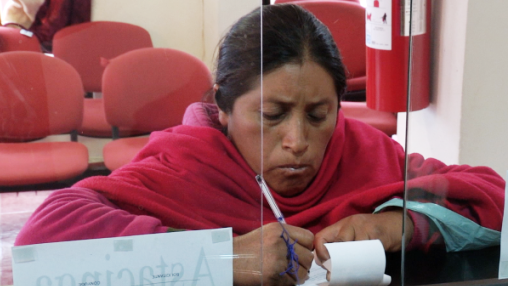When you live far away from the cities, roads are unpaved and electricity scarce, access to a financial institution might not seem the main priority.
But think about it: having access to a safe way to save your money or to decent credits, could mean the difference between life and death if something serious comes up. In Mexico, financial services are crucial to send and receive remittances safely, or could help boost local commerce and living standards.
That’s how Jaime Marín Hernández sees it. The farmer who plants and sells lime trees says that saving money is important for him. “I have about 5000 pesos of savings now. For me, the more I save, the better,” he explains.
Marco Polo Tapia Juárez, a school boy, already saves money for school material or toys and thinks that it is safer to have it in the “caja de ahorros”, the rural financial institution, than in his house. “If my father gets ill, or something like that, I know we can take out money, in case of any emergency,” he explains.
Millions of Mexicans without a bank account
But about more than half of Mexican households still don’t have access to financial services, and in rural areas the access rate is only an extremely low 6%.
The World Bank has analyzed that among the factors for this lack of financial service use are insufficient knowledge of financial products and benefits, as well as an inadequate access network, especially in rural areas.
The rural poor are not seen as a potential market for commercial banking services because of their marginalized condition, geographically disparate locations, and lack of knowledge of this market.

